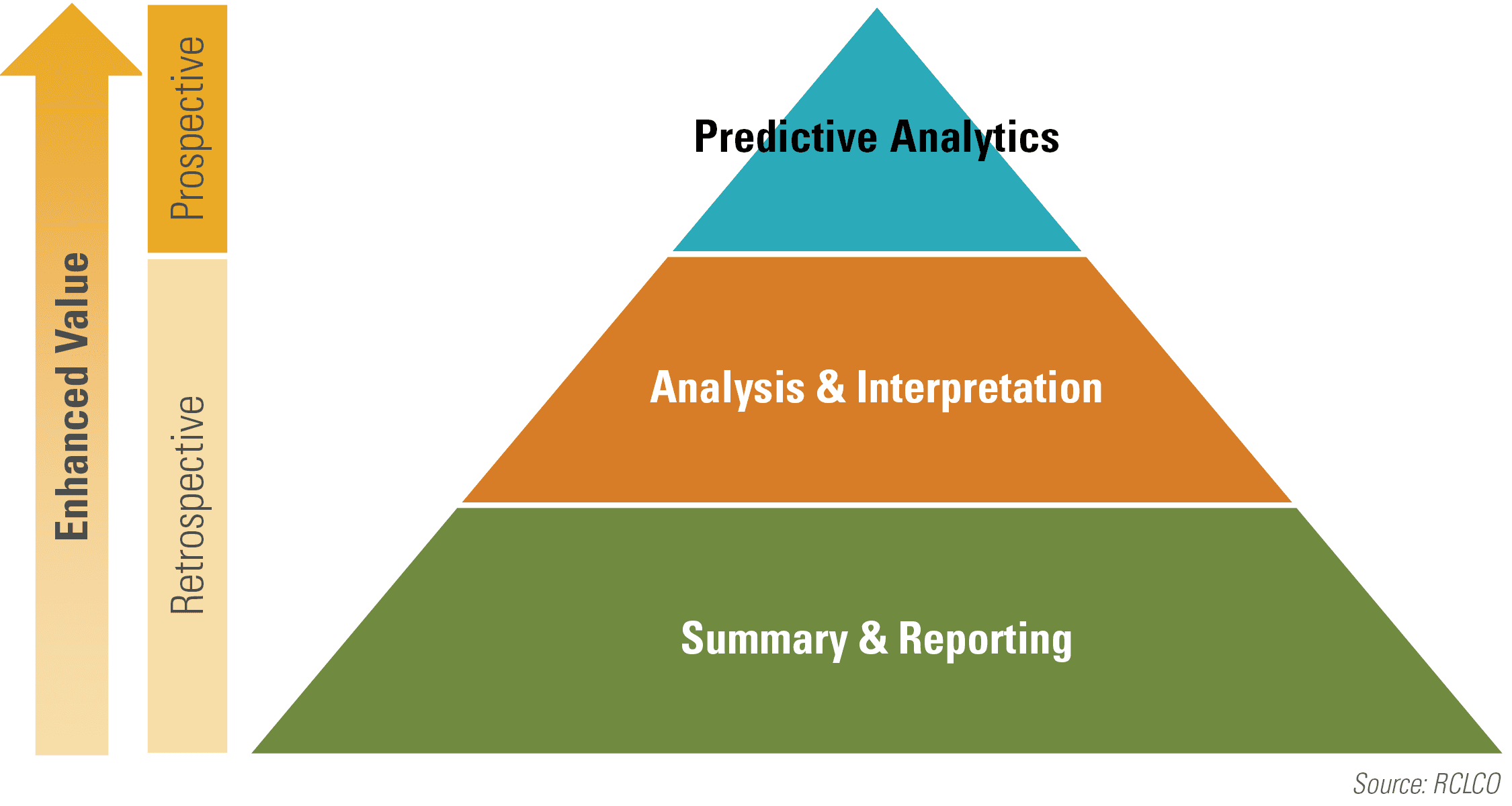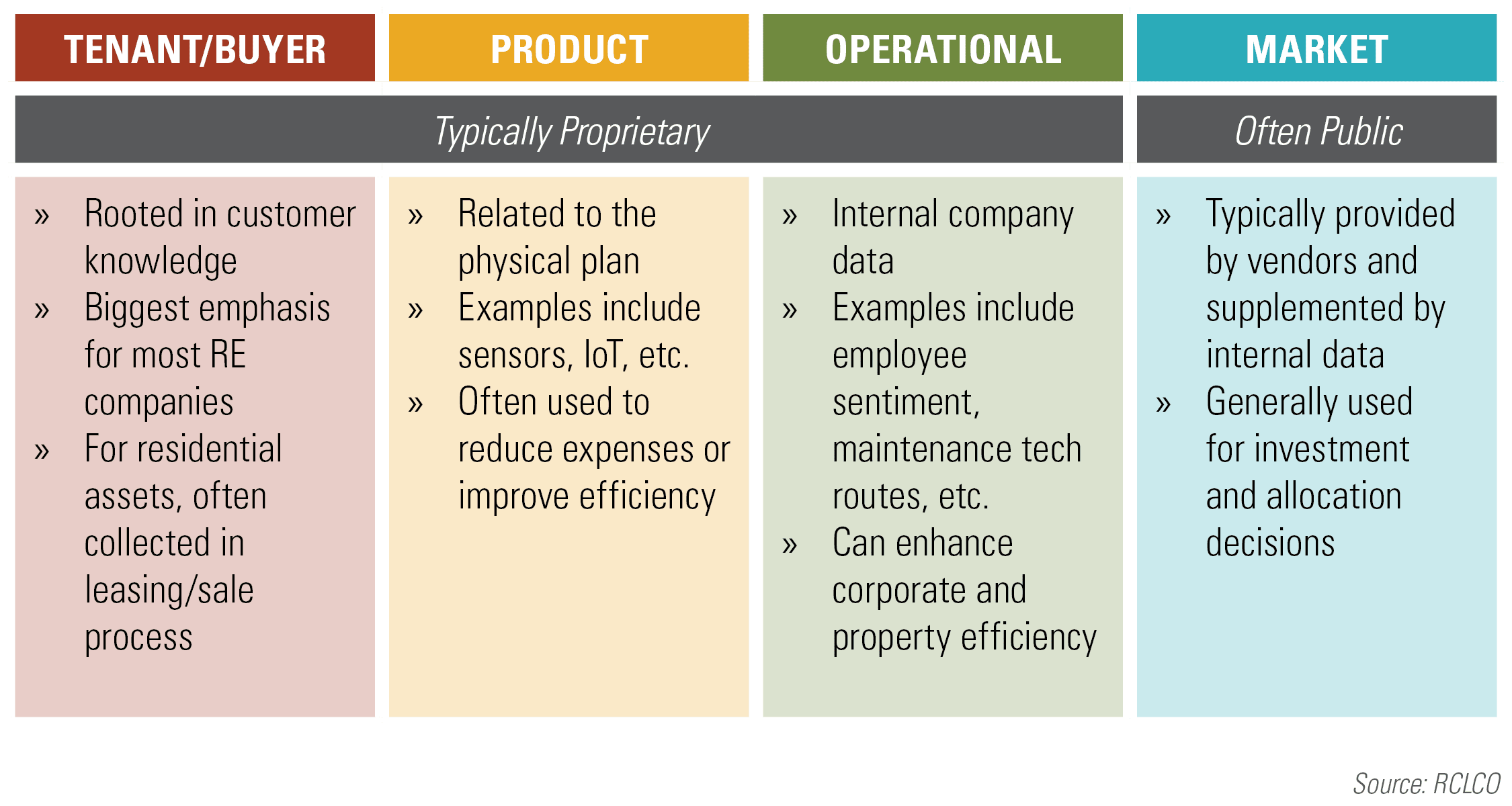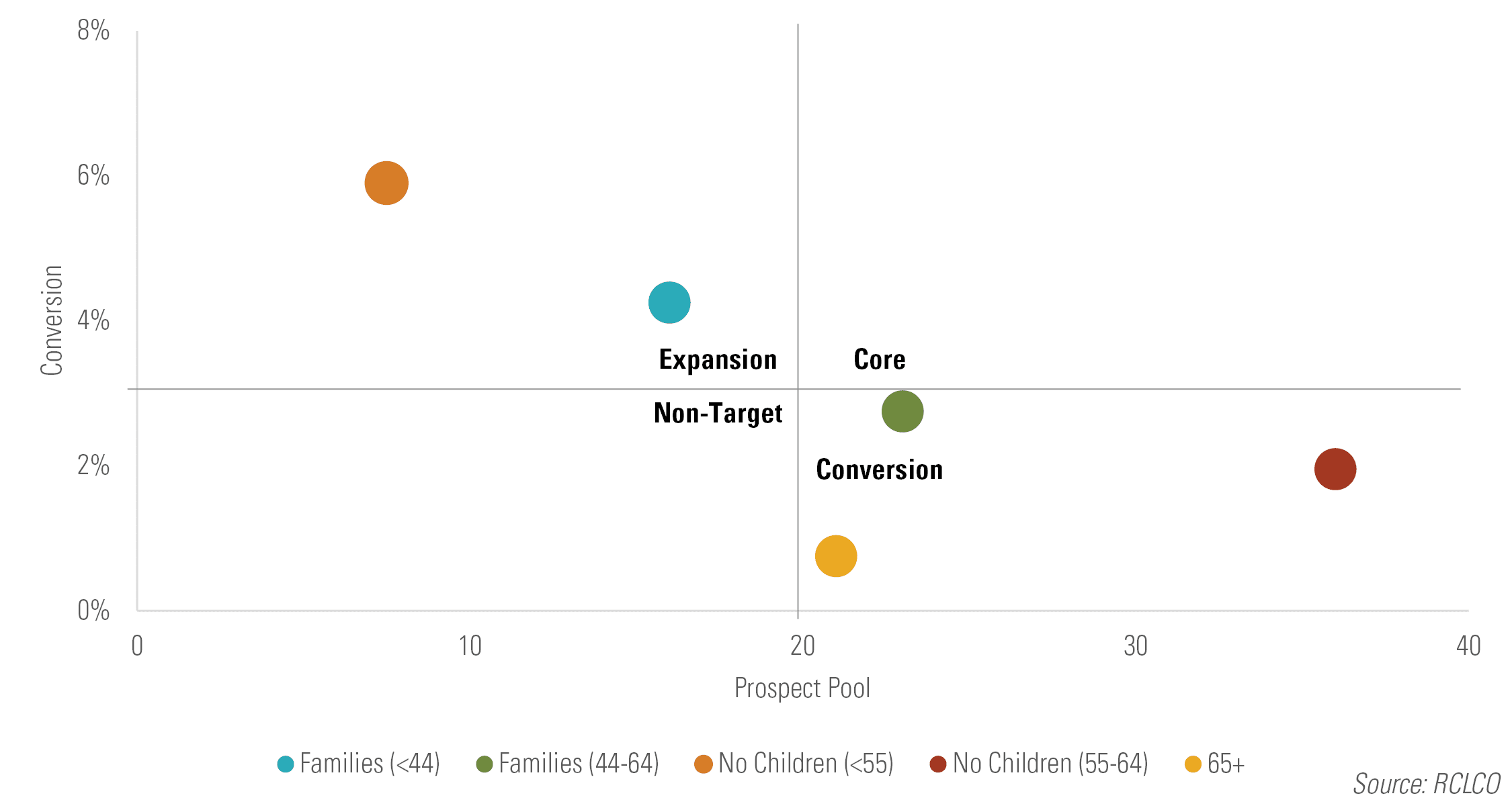3 Rules of Data-Driven Decision-Making for Real Estate Companies

Across all economic sectors, the creation, collection, and interpretation of vast amounts of new data has empowered companies to make better strategic decisions. However, the real estate industry has been slow to adapt, consistent with its reputation as a sector that eschews formal research and relies on intuition and imperfect market data. For companies that have not developed systems that integrate data in internal decision-making processes, the relative absence of rigorous insights is a substantial competitive disadvantage that promises to grow in the coming years.
Fundamental to developing a strategy that leverages data effectively is recognizing the gradients of sophistication in the overarching hierarchy of data analysis. All real estate companies incorporate data in daily activities, but exceptionally few use data in a way that drives maximum value. At the most basic level, data are used to summarize company performance through reporting. More advanced companies apply analytics to create insights or develop and invest in an internal research function. At the highest level, companies can leverage data in a way that supports forward-looking strategy, although few within the real estate industry do so yet.
Hierarchy of Data Analysis

Through RCLCO’s management consulting practice, we have worked with real estate companies of all sizes to better define their objectives for data usage and to implement systems for incorporating data analysis in all aspects of their business. Our experience with these companies has helped us identify several key tenets that underpin effective data-driven decision-making in the real estate industry:
1. Start with strategy, not data.
Many companies begin their efforts at data integration by digging through data that has already been collected or databased internally. Oftentimes, though, this approach has the adverse effect of unnecessarily constraining the analysis or limiting the scope of the inquiry. We have seen that the better approach is to start with key business questions that are likely to drive meaningful impact. By building leadership consensus around strategic priorities and critical unanswered questions first, and then developing a data infrastructure to support it, companies are more likely to develop data solutions with staying power.
We saw this lesson in practice with a residential company that had recently begun investing in substantial analytics capabilities. The team’s efforts had improved the company’s customer knowledge but the business use case of those insights was poorly defined. As we worked with the executive team to define strategic priorities, it became clear that the company’s resident retention rates were a key lever with significant bottom-line implications. By defining improved retention as a strategic initiative, the analytics team had renewed clarity in their objectives. The company has consequently been able to focus its efforts in piloting data-driven retention efforts and developing predictive capabilities that link tenant behaviors to likelihood-to-renew.
2. Think about data expansively.
The rapid advancement of technology has led to a correspondingly significant increase in the data available to real estate companies. For the first time, companies are able to track with granularity a host of activities. Companies at the forefront of data-driven decision-making embrace datasets from all facets of the business, ensuring that their teams are able to apply analytics to the full range of business practices. WeWork has demonstrated the power of integrated data collection and analysis to enhance its strategy. Combining deep customer knowledge and integrated sensors (tracking everything from occupancy to air quality), the company is able to constantly reevaluate its facilities and quickly adapt to trends it identifies.
Common Data Sources in Real Estate

3. Be wary of confirmation bias and over-specification.
While evaluating complex sets of data, many companies fall victim to confirmation bias by searching for patterns in the data that corroborate the conventional wisdom. Teams that embrace a culture of rigorous analytics often take the opposite approach. These groups remain hypothesis-driven but tend to design analytical tests intended to disprove the hypothesis. This “red team” approach helps companies challenge intuition in a structured way.
Similarly, in any analytical exercise, it is necessary to separate noisy signals from those that matter. In large enterprise data sets, the risk of over-fitting—making an overly complex model that relies on unnecessary variables—is heightened. Being wary of spurious correlations and being attentive to data management best practices is critical to ensuring valid conclusions.
In one recent engagement, our consulting team encountered the perils of confirmation bias. The company’s executive team had deep-seated convictions about the firm’s unique geographic deployment where conventional wisdom had long held that the market was relatively isolated from market swings. They had tested their hypothesis in previous years with a limited dataset and had developed corresponding supporting materials to share with investors. Aiming to rigorously test their assumptions, our team collected a broader set of data that had the potential to illuminate a deeper context. The data revealed that while rent growth was indeed more stable than in other markets, asset prices varied much more widely than benchmarks. These findings and other contributing factors helped the executive team question their conventional wisdom and craft a strategy that was attuned to the realities of their markets as reflected in the data.
Case Study – Using Data to Drive Deep Customer Insights
Recently, RCLCO partnered with a large residential real estate company to perform a deep dive into the company’s customer data. Our goal was to segment the firm’s tenants and use big data to evaluate customer needs and outcomes. Beginning with the data provided by the company—generic information about current residents—RCLCO’s first initiative was to expand the dataset. Working with third-party data providers, our analytics teams appended supplementary data that enriched our understanding of residents, including their economic status, consumption patterns, and lifestyle preferences. RCLCO then applied a range of analytical processes to the data to parse the current customer base.
For our client, the analytics provided a range of actionable insights grounded in customer knowledge. First, the data illuminated predictive attributes of customers most likely to purchase a unit. Whereas previously the company had relied on sales representatives’ intuition to assess the most valuable prospects, rigorously analyzing a large dataset allowed us to identify with specificity the sales traffic that was most likely to convert. Second, a robust benchmarking system allowed us to compare the company’s customers to the market as a whole. The comparative analysis helped our client understand their products’ market positioning with greater nuance. Finally, our analysis gave the company forward-looking visibility into expansion opportunities. By defining market segments that were most likely to convert and had the deepest pool of prospects (a visualization of which is shown below), the client was able to enhance the product offerings and better target messaging to appeal to its most valuable consumer base. These insights—powered by a deep and expansive analysis of customer data—have transformed the way the company thinks about customers and has empowered the organization to integrate data at every stage in the design-prospecting-sale process.
Case Study – Opportunity Group Segmentation Analysis

To learn more about how RCLCO can help your company implement best practices in data-driven decision making, contact our strategy planning and management consulting team.
Article and research prepared by Eric Willett, Vice President.
Disclaimer: Reasonable efforts have been made to ensure that the data contained in this Advisory reflect accurate and timely information, and the data is believed to be reliable and comprehensive. The Advisory is based on estimates, assumptions, and other information developed by RCLCO from its independent research effort and general knowledge of the industry. This Advisory contains opinions that represent our view of reasonable expectations at this particular time, but our opinions are not offered as predictions or assurances that particular events will occur.
Related Articles
Speak to One of Our Real Estate Advisors Today
We take a strategic, data-driven approach to solving your real estate problems.
Contact Us









